As Facebook grows as a social network, marketers and advertisers are likely to flock there to experiment with a new way to reach people. In fact, according to a Vizu/Digiday study via eMarketer, 64% of U.S. advertisers are upping their social ad budget in 2013. But with over 1 billion people using Facebook, how do you find the right people?
With traditional Facebook ads, advertisers can target people based on information that Facebook already has on people. This includes age, demographic location, marital status, interests, education and workplace. These targeting options help people narrow down their audience to help increase the ROI of their Facebook ads. Using the Facebook Power Editor, you can even create a specific audience using these targeting options and save that audience for use in all of your ads.
But did you know you can get even more granular? You can. Better Facebook ad targeting is within reach, if you use a little something called "Custom Audiences" in the Facebook Power Editor. This post is going to shed some light on that oft-overlooked feature -- when you're done reading this post, you'll be ready to roll with insanely targeted Facebook ads that help you generate more leads from social media. Let's get started!
Setting Up the Facebook Power Editor
To create Custom Audiences, you first need to set up the Facebook Power Editor. To make sure we're all starting on the same page, let me show you where you can find the Power Editor, and introduce you to what it is. If you've already set up the Facebook Power Editor, feel free to move on to the next section.
The Facebook Power Editor can be found in the Facebook Ads Manager. The Power Editor is great for intricate ad campaigns and bulk uploading. All your ads from Facebook will appear here, and audiences (not Custom Audiences, just plain audiences) can be saved and used in future campaigns. These audiences are made using the demographic targeting -- things like location, age, gender, interests, education and employment.
Be sure to name your audience something specific that you will be able to associate with a certain audience, such as "North America, age 18-24, women, interest=gardening." These audiences can only be accessed through the Facebook Power Editor.
How to Use Custom Audiences in Facebook Ads
The audiences created above that you can save should not be confused with "Custom Audiences." A Custom Audience on Facebook is a list of people your company would like to target with your ads, whose email addresses you already have. So let's say you have a list of 100,000 prospects you would like to convert into a lead or a customer -- targeted ads on Facebook could help them take that next step on the conversion path.
To create a Custom Audience, use the Facebook Power Editor. Choose "Custom Audiences," and then, "Create audience."
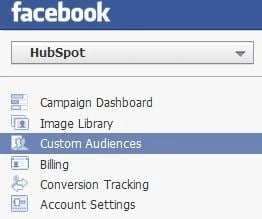
Here, you will be asked to name the audience and write a short description that you can look at on a later date. Make sure it's descriptive enough that you could identify it later.
Then, select "Choose File" to upload a CSV or TXT file pulled from your database of those prospects you'd like to target. You can match up people based on email address, UID (Facebook user ID), or phone number. The data you have will need to match with the information your prospects have on their Facebook profile -- because of this, matching up by email address, or UID (if you have it!) may have the best results.
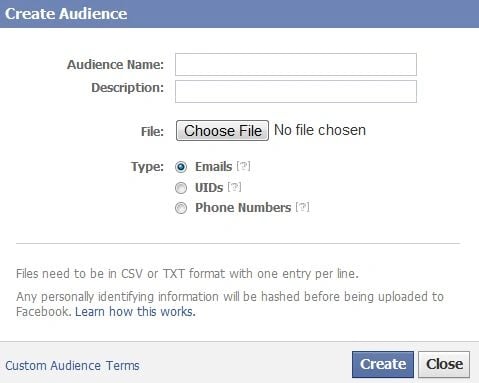
Your audience will upload into the Power Editor and can be used in any ad you create. To use a Custom Audience, select an ad campaign -- you'll see them on the left -- that you would like to edit. Then, under "Audience," select "Advanced Options" where you can select a Custom Audience you've already created.
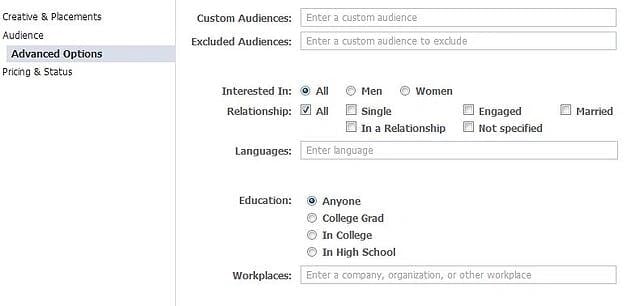
You can also use this feature to exclude an audience, similar to a suppression file. Simply enter your custom audience into the "Excluded Audiences" option in the work space.
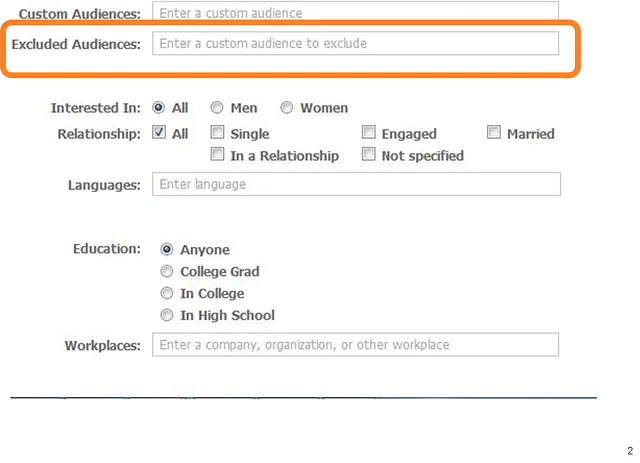
Using an Excluded Audience will negatively target people, or remove the people you do not want to see your ads. Current customers or people that you know are not a good fit for your product would make a good "Excluded audience" to avoid wasting money on advertising to people who will not become your customers (or who already are).
A "For Instance," For You!
Now you know the keystrokes to use Custom Audiences in your Facebook ads. But how can you use this how-to knowledge to benefit your marketing? Besides, you know, better targeting and segmentation? I like to leave readers with an example that brings things more down to earth, so let's employ a hypothetical example here that shows you how one might use Custom Audiences.
Let's say your company sells car seats for babies. The sales process is pretty long because these seats are very high quality, and your buyer persona does a ton of research before making a purchase. So your sales team usually calls potential customers at least two times before people buy, and has a good amount of lead intelligence about leads because of all the research they do pre-purchase. You've created a list of over 30,000 people in North America that have subscribed to your blog, talked to a salesperson, or given you their email address, and you want to target these people on Facebook to remind them about your business. Custom Audiences would be an excellent way to target this particular list of 30,000 people who have shown interest in your products, and potentially convert them into customers!
At the same time, of these 30,000 people, some may already be customers who you don't want to advertise to. That would be a total waste of money. To avoid advertising to people that are already customers, create a file of all the email addresses of your current customers from your customer relationship manager system (CRM). Upload this list into your Facebook Custom Audiences, as you did before. Use this list as an "Excluded Audience" when setting up the ad targeting in your Facebook ad campaign. Now, your ads are only shown to the people you're trying to convert into customers, while avoiding advertising to people who have already purchased.
Using both custom and excluded audiences can help your company be more loveable, and get you more return on your social advertising investment. Pretty cool little feature, eh?
Have you used Facebook Custom Audiences to better target your Facebook ads? Did you see good results?
Image credit: cambodia4kidsorg





![Anatomy of a Facebook Ad: How to Create Scroll-Stopping Campaigns [+ Examples]](https://53.fs1.hubspotusercontent-na1.net/hubfs/53/anatomy-of-a-fb-ad.png)
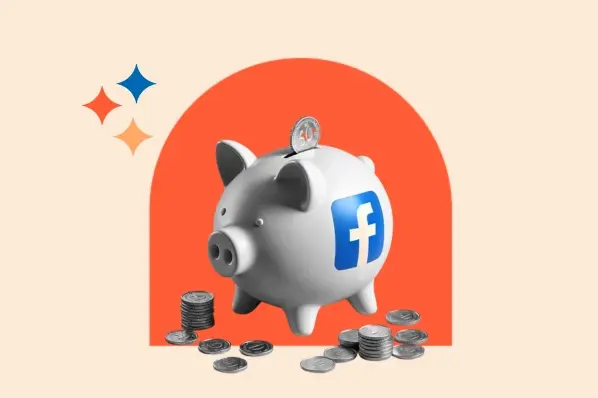
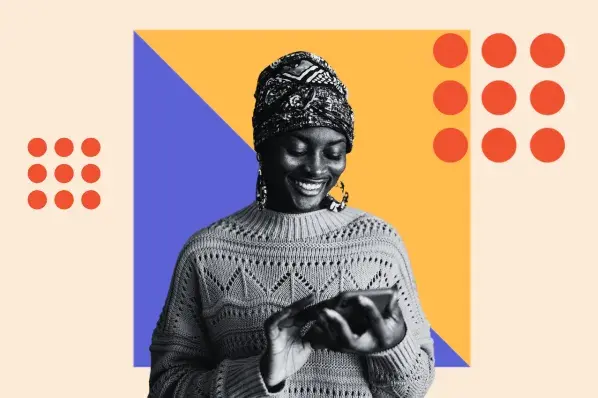
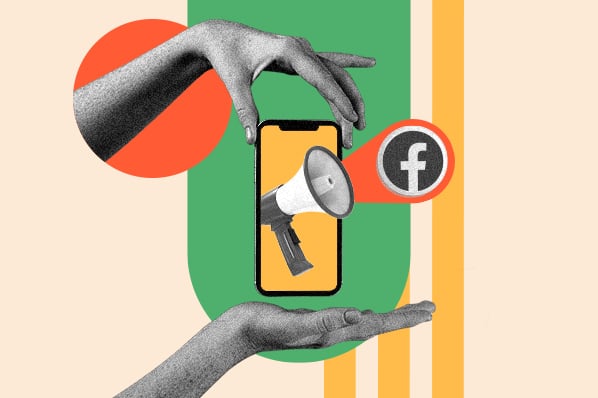
.jpg)
![What Is Facebook CBO? Budget Optimization Done Right [Tutorial]](https://53.fs1.hubspotusercontent-na1.net/hubfs/53/facebook-cbo.jpg)
